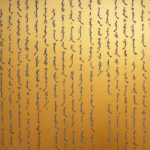Mongol

In the 13th and 14th centuries the Mongols brutally established the largest empire the world has seen, stretching from Southeast Asia to Europe. Led first by the infamous Genghis Khan and followed by Kublai Khan, they instituted the Yuan Dynasty and ruled China from 1271 to 1368.
The Mongols of China are an unreached people group who are captives to a history of shamanism, spirit worship and Lama Buddhism. They are located primarily within the province of Inner Mongolia, but Mongols also live in several provinces of northern and western China.
The Mongolian population of China is more than twice that of the nation of Mongolia. Interestingly, the Mongols of China have in many ways maintained their ethnic identity to a greater degree than the Mongols of Mongolia. They have even retained their written system, while the Mongols of Mongolia adopted the Russian Cyrillic system. They also have retained their language, even in the face of Chinese efforts to impose the Mandarin language.
The Mongols of Mongolia have had a vibrant witness since the early 1990’s, marked by many conversions and the establishment of a national church fellowship. However, the Mongols of China remain an unreached people group with the vast majority having no gospel witness. Many who were thought to be Mongol believers in the province of Inner Mongolia turned out to be of the Han (ethnic Chinese) people group. Of the 7 million Mongols in China, nearly all are Lama Buddhist, with a small minority of 30,000 adhering to Islam.







